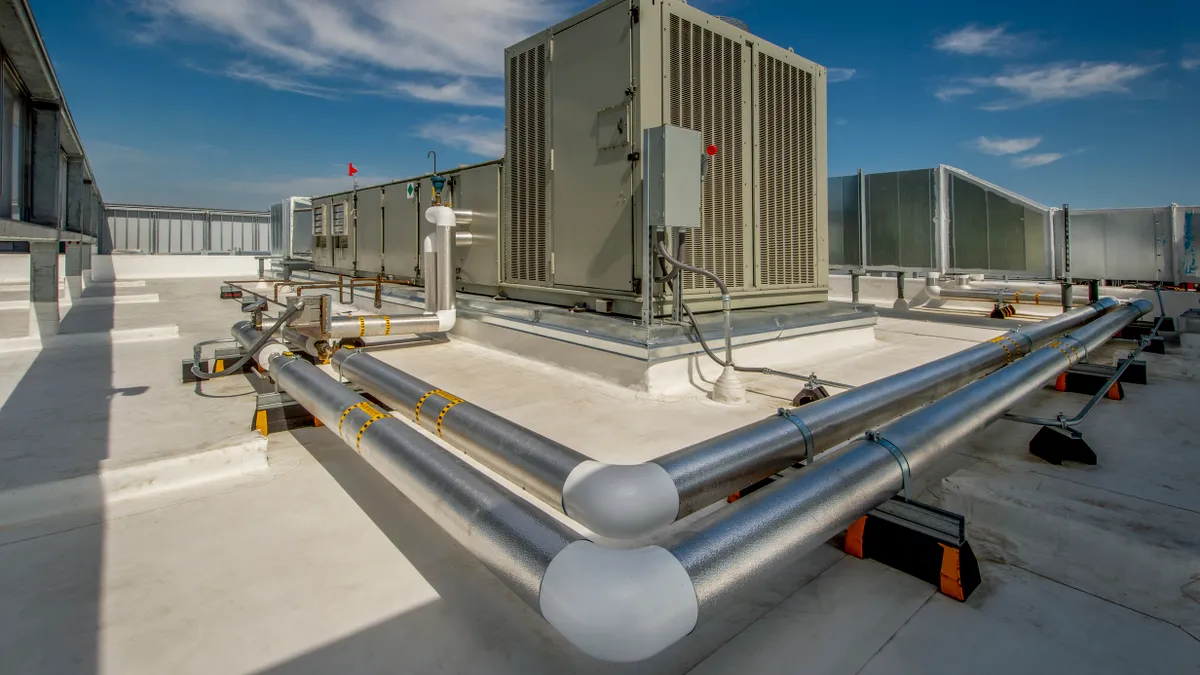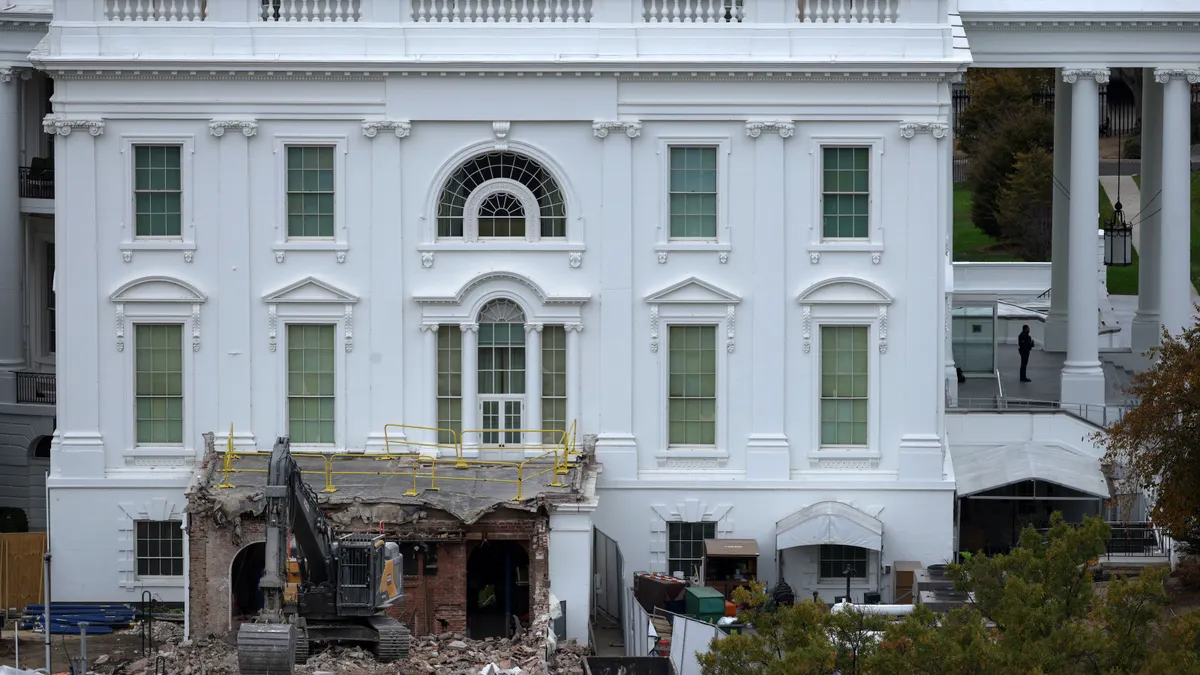Dive Brief:
- The American Society of Heating, Refrigerating and Air-Conditioning Engineers revealed new standards dedicated to preventing and mitigating the spread of infectious diseases in existing, new and retrofit buildings, the trade group announced last week.
- ASHRAE’s Standard 241, called “Control of Infectious Aerosols,” broadly applies to building owners, and will also apply to contractors and subcontractors who perform work on these buildings.
- The association claims that its new standard will help protect occupants from exposure to viruses such as the those behind the COVID-19 infection and influenza.
Dive Insight:
Standard 241 provides requirements for many aspects of air system design, installation, operation and maintenance, including:
- Infection Risk Management Mode: Certain parts of Standard 241 activate during an “infection risk management mode” that applies during identified periods of elevated risk of disease transmission. ASHRAE cites “authorities having jurisdiction” as bodies able to mark these periods, but the owner or operator of the space can also activate them.
- Requirements for equivalent clean airflow rate: Prior standards specify outdoor airflow rate and filtration requirements to control normal indoor air contaminants, per ASHRAE. The group claims that Standard 241 breaks new ground by setting new requirements for equivalent clean airflow rate.
- Requirements for use of filtration and air cleaning technology: Standard 241 provides extensive requirements for use of filtration and air cleaning to achieve equivalent clean airflow requirements. These include testing requirements to establish performance and to demonstrate that operation does not degrade indoor air quality in other ways.
- Planning and commissioning: Standard 241 provides assessment and planning requirements culminating in the development of a “building readiness plan,” a concept carried over from the work of ASHRAE’s Epidemic Task Force. It also describes procedures for commissioning systems to determine their installed performance.
“This standard empowers building owners, operators and professionals to take proactive measures in safeguarding indoor environments,” said ASHRAE President Farooq Mehboob in the release. “It's an essential tool for creating healthier indoor environments and promoting sustainable practices."
The importance of protecting against airborne illnesses came to the forefront with the COVID pandemic, which has killed nearly 7 million people worldwide since the first cases were recorded in China in late 2019, according to the World Health Organization. For the construction industry specifically, it created challenges over labor requirements, vaccinations, social distancing and material cost escalation.
OSHA has its own requirements regarding the spread of COVID on jobsites that deal with interpersonal spacing, personal protective equipment and what construction workers need to know about working during the pandemic.














